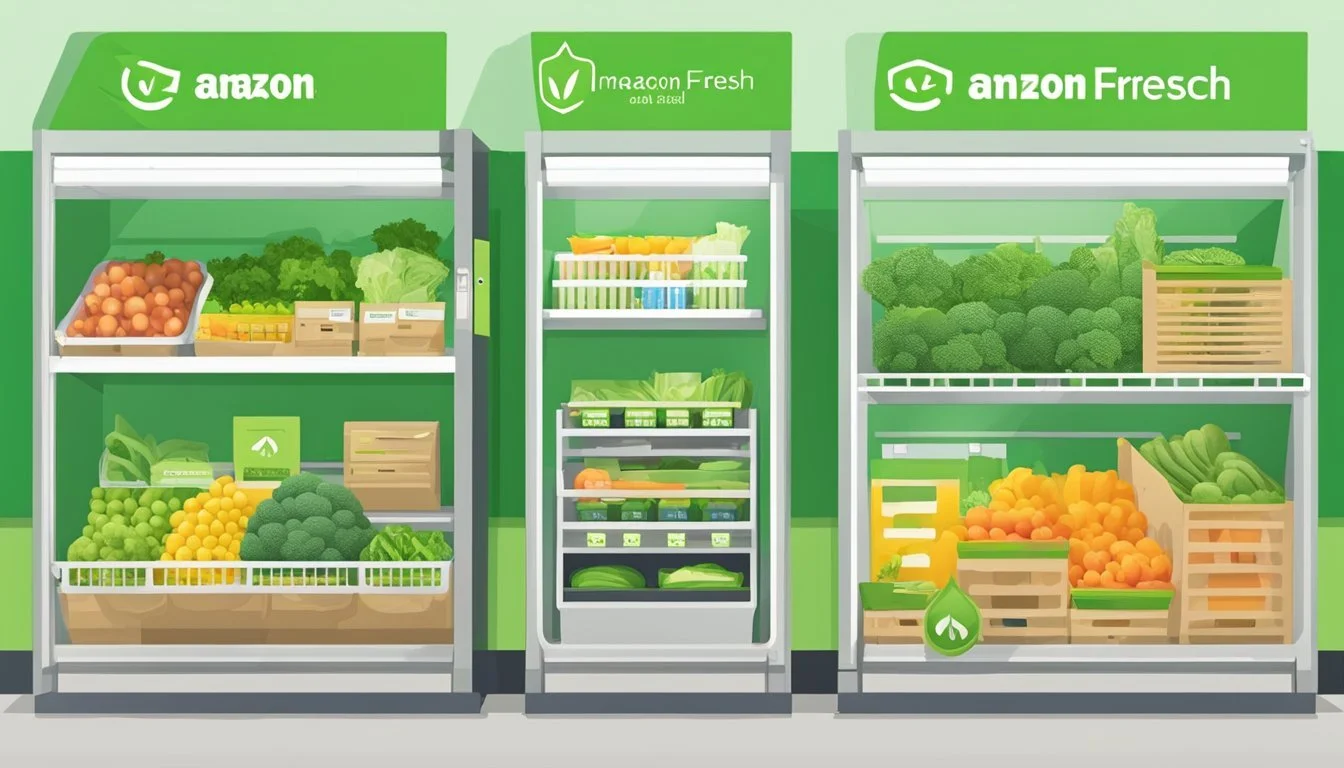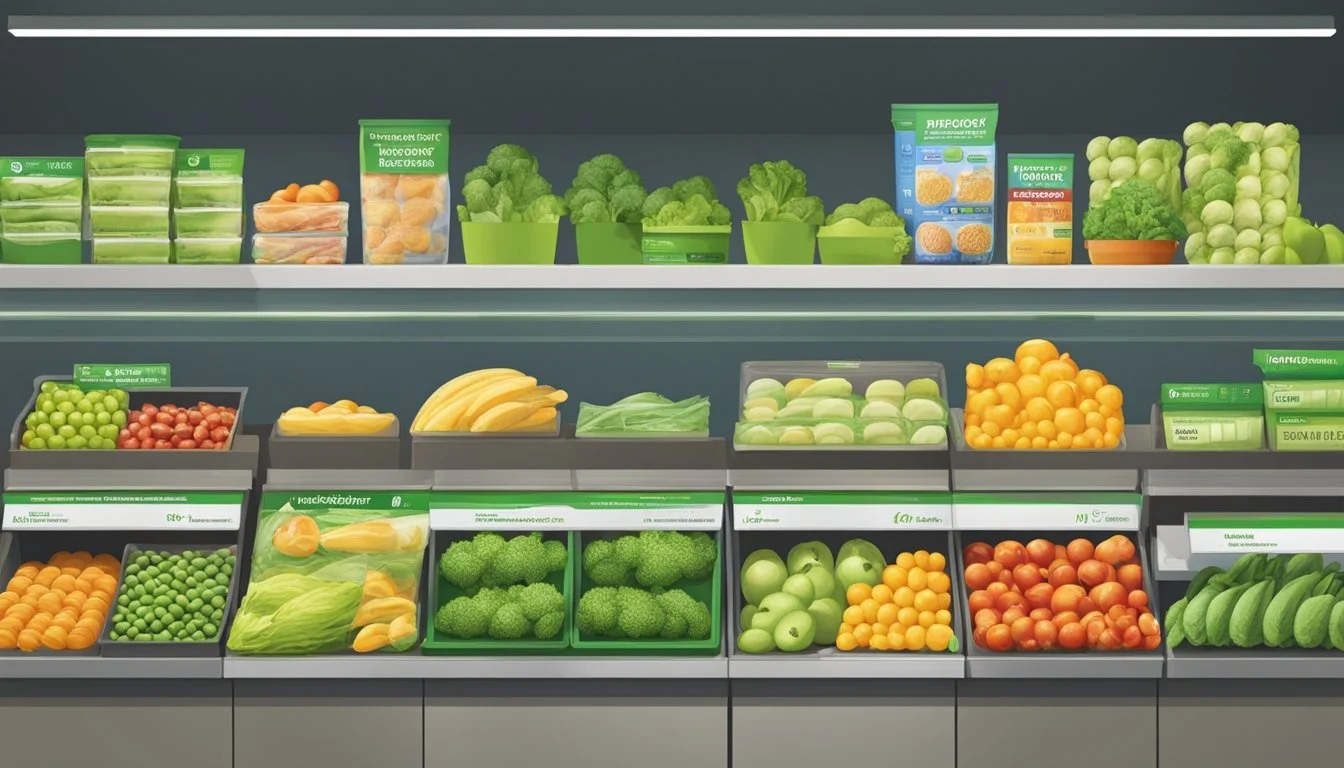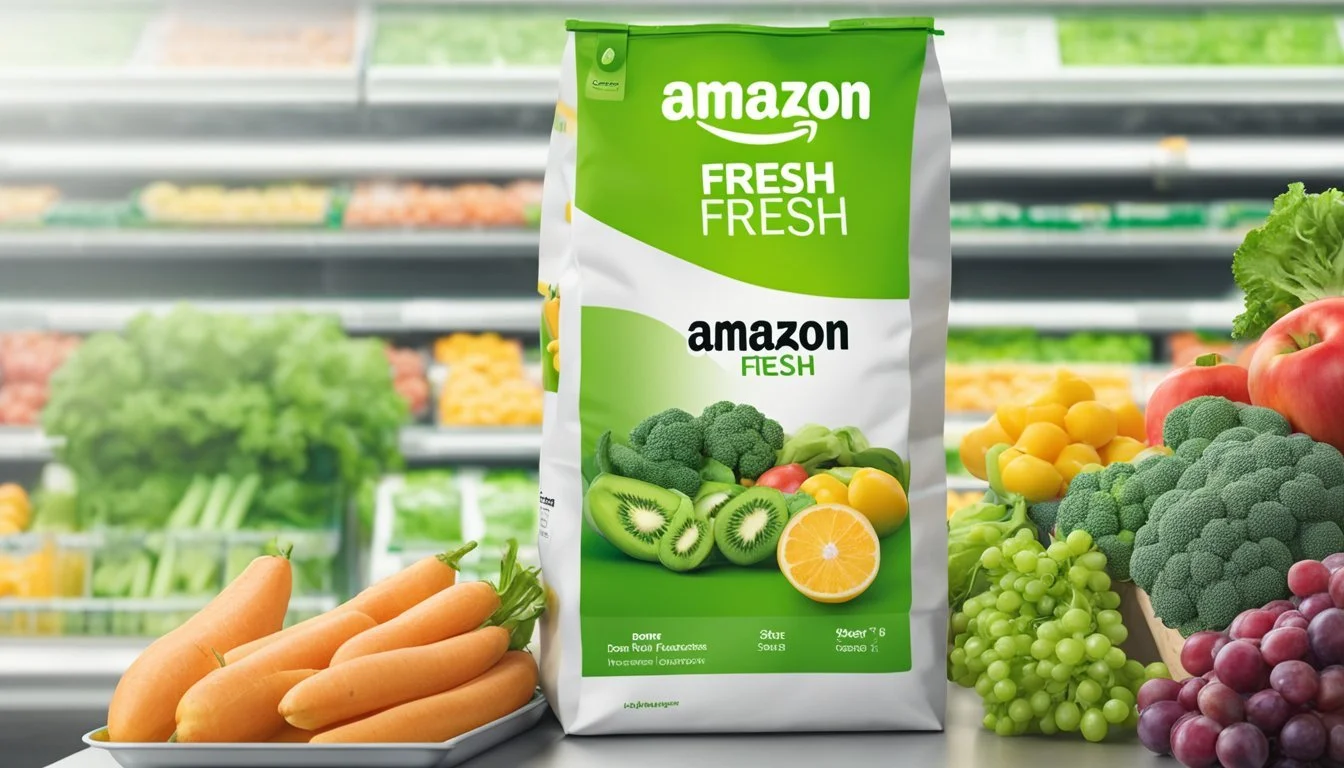Is Amazon Fresh Cheaper Than FoodMaxx?
A price comparison of online and in-store grocery options
Amazon Fresh and FoodMaxx are two popular grocery options, but which one offers better prices? Many shoppers are looking to save money on their grocery bills without sacrificing quality.
Based on price comparisons, FoodMaxx tends to have lower overall prices than Amazon Fresh. FoodMaxx is known for its discounted prices, often offering groceries at 21% below the average market price. Amazon Fresh, while competitive in some categories, generally has higher prices than large grocery chains.
Despite FoodMaxx's price advantage, Amazon Fresh offers convenience through its delivery service. This can be valuable for those who prioritize time savings over the lowest possible prices. Both stores have their strengths, and the best choice may depend on individual shopping preferences and needs.
Understanding Amazon Fresh Service
Amazon Fresh is a grocery delivery service exclusively available to Amazon Prime members. It offers convenient online shopping and home delivery of groceries and household essentials.
Amazon Prime and Its Benefits
Amazon Prime membership unlocks access to Amazon Fresh. Prime includes benefits like free shipping on eligible items, streaming video and music, and exclusive deals. For grocery shoppers, Prime provides access to Whole Foods Market discounts and Amazon Fresh delivery. Prime members can order groceries online and have them delivered to their doorstep, often within hours.
Prime Membership Costs
An Amazon Prime membership costs $139 per year or $14.99 per month. Students can get a discounted rate of $7.49 per month. For those uncertain about committing, Amazon offers a 30-day free trial of Prime. This trial includes access to Amazon Fresh, allowing customers to test the service before paying for a full membership.
Navigating the Amazon Fresh App
The Amazon Fresh app provides a user-friendly interface for grocery shopping. Customers can browse products by category, search for specific items, and view past orders. The app allows users to create shopping lists, set delivery preferences, and track orders in real-time. It also offers personalized recommendations based on shopping history.
Service Fees and Free Delivery Thresholds
Amazon Fresh waives delivery fees on orders over $35 in most areas. Orders under this threshold may incur a delivery fee, typically around $5-$10. Prime members in some locations can enjoy free delivery on all Amazon Fresh orders, regardless of the total. It's important to check local offerings, as fees and thresholds can vary by region.
Grocery Delivery Service Overview
Amazon Fresh offers a wide selection of groceries, including fresh produce, meat, dairy, pantry staples, and household items. The service sources products from local suppliers and Amazon fulfillment centers. Customers can expect quality comparable to traditional grocery stores. Amazon Fresh also provides some Whole Foods Market products, expanding the selection of organic and specialty items available.
Same-Day Delivery Options
Amazon Fresh offers same-day delivery in many areas. Customers can often receive their groceries within 2-3 hours of placing an order. Delivery windows are typically available from early morning to late evening. For added convenience, Amazon Fresh provides attended and unattended delivery options. Customers can choose to receive their groceries in person or have them left at their doorstep in temperature-controlled totes.
Comparing Grocery Stores and Services
Price, quality, variety, and convenience shape the competitive landscape of grocery shopping. Different stores and services cater to diverse consumer needs through unique strategies and offerings.
Supermarket Pricing Strategies
Grocery stores employ various pricing tactics to attract customers. FoodMaxx focuses on everyday low prices, while Amazon Fresh uses dynamic pricing based on demand and inventory. Some chains like Safeway and Lucky offer weekly sales and loyalty programs. Walmart and Target leverage their size for competitive pricing across categories.
Stores like Aldi keep costs down through limited selection and private labels. Trader Joe's balances unique products with affordable prices. Whole Foods Market, known for premium offerings, has introduced more competitive pricing since its acquisition by Amazon.
Quality of Product Offerings
Product quality varies between grocery options. Whole Foods Market and Trader Joe's emphasize organic and natural products. FoodMaxx and Foods Co prioritize value, sometimes at the expense of premium options. Amazon Fresh aims for a balance, offering both budget and high-end choices.
Safeway and Lucky provide a mix of national brands and store-brand alternatives. Walmart focuses on consistent quality across its vast inventory. Aldi has gained popularity for its high-quality private label products at low prices.
Variety and Selection of Goods
Selection differs significantly among grocery retailers. Supercenters like Walmart offer extensive choices across food and non-food items. Specialized stores like Trader Joe's curate a smaller, unique selection. Amazon Fresh provides a wide range of products, including local and specialty items in some markets.
FoodMaxx and Foods Co typically offer fewer brand options but cover essential categories. Whole Foods Market excels in organic and specialty products. Aldi's limited selection allows for faster shopping and lower prices.
Convenience and Shopping Experience
Convenience factors heavily into grocery choices. Amazon Fresh and Walmart offer home delivery and pickup options. Traditional stores like Safeway and Lucky provide familiar in-store experiences with self-checkout lanes for faster transactions.
FoodMaxx focuses on no-frills shopping to keep prices low. Trader Joe's creates a distinct atmosphere with friendly staff and unique products. Whole Foods Market aims for a premium shopping experience with prepared food options and in-store dining areas.
Competitors in Grocery Delivery
The grocery delivery market has become increasingly competitive. Amazon Fresh competes directly with Walmart's delivery service. Instacart partners with various chains, including Safeway and Target, to offer delivery from multiple stores.
Whole Foods Market leverages Amazon's logistics for quick delivery in many areas. Some regional chains have developed their own delivery services to compete. FoodMaxx and Foods Co have more limited delivery options, often relying on third-party services.
Comparative Analysis of Grocery Chains
Each grocery chain has its strengths and weaknesses. Walmart leads in price and selection for many items. Amazon Fresh offers competitive pricing with the convenience of online ordering and quick delivery. FoodMaxx provides low prices but with a more limited selection.
Safeway and Lucky balance traditional supermarket offerings with modern conveniences. Whole Foods Market and Trader Joe's attract customers seeking unique and health-focused products. Aldi has carved out a niche with its efficient stores and low-priced, quality private labels.
Target has expanded its grocery offerings, competing on convenience for shoppers seeking a one-stop shopping experience. Lowe's, while not a traditional grocery store, has entered the market with basic food items in some locations.
Cost Considerations
Amazon Fresh and FoodMaxx offer different pricing models and shopping experiences. Comparing their costs involves examining various factors beyond just the price tags on individual items.
Examining Average Prices
Amazon Fresh tends to have competitive prices on many items, especially when compared to specialty grocery stores. However, FoodMaxx is known for its discount prices and no-frills approach. A basket of common groceries at FoodMaxx often costs less than at Amazon Fresh. For example, staples like milk, bread, and eggs are typically cheaper at FoodMaxx. Amazon Fresh may have better deals on certain organic or specialty products.
Evaluating Fee Structures
FoodMaxx operates as a traditional grocery store without additional fees for shopping. Amazon Fresh, on the other hand, requires a Prime membership ($139 annually) plus a monthly fee of $14.99 for unlimited deliveries on orders over $35. For those who shop frequently, these fees can be offset by convenience and potential savings. FoodMaxx customers save on these fees but may incur transportation costs to visit the store.
Discounts and Saving Opportunities
Both retailers offer ways to save money. FoodMaxx frequently runs in-store promotions and offers a loyalty program with additional discounts. Amazon Fresh provides regular deals and promotions, often tied to Prime membership benefits. They also offer a subscribe-and-save option for recurring purchases, which can lead to savings of up to 15% on select items.
• FoodMaxx:
Weekly ad specials
Loyalty program discounts
Bulk buying options
• Amazon Fresh:
Prime member exclusive deals
Subscribe-and-save discounts
Digital coupons
Tipping and Hidden Costs
Shopping at FoodMaxx doesn't involve tipping, while Amazon Fresh deliveries often come with an expectation of tipping the driver. The default tip is typically set at 10%, but customers can adjust this amount. This additional cost should be factored into the overall expense of using Amazon Fresh. FoodMaxx shoppers should consider the cost of transportation and time spent shopping when comparing total expenses.
Category and Product Analysis
Amazon Fresh and FoodMaxx offer diverse product selections across multiple categories. Price differences vary depending on specific items and product types.
Produce and Perishables
Amazon Fresh provides a wide range of fresh produce and perishables. Bananas in a 2 lb. bag cost $1.29, while a large Hass avocado is priced at $1.72. The service emphasizes quality and freshness, often sourcing from local suppliers.
FoodMaxx, known for its budget-friendly options, typically offers competitive prices on produce. Their selection may be more limited compared to Amazon Fresh, but prices are generally lower.
Seasonal items and organic options are available at both retailers, with Amazon Fresh having a slight edge in organic variety.
Meat and Dairy Product Comparison
Amazon Fresh carries a selection of meats, including ground beef and seafood. Their dairy products encompass a range of options from basic milk to specialty cheeses.
FoodMaxx provides a solid selection of meat and dairy at generally lower prices. Their focus on affordability often results in better deals on everyday items like milk, eggs, and cheese.
Quality comparisons can vary, with Amazon Fresh potentially offering more premium or organic options in this category.
Beverages, Snacks, and Pantry Staples
Amazon Fresh stocks a comprehensive range of beverages, snacks, and pantry staples. They offer both name-brand items like Cheerios and their own Fresh and Happy Belly brands.
FoodMaxx carries a mix of national brands and budget-friendly alternatives. Their selection may be more limited but often at lower price points.
Snack options are plentiful at both retailers. Amazon Fresh might have a wider variety of specialty or gourmet items, while FoodMaxx focuses on popular, mainstream choices.
Household Supplies and Personal Care Items
Amazon Fresh provides a broad selection of household supplies and personal care products. This includes cleaning supplies, paper goods, and toiletries.
FoodMaxx also offers these categories, typically at lower prices. Their selection may be more focused on essential, everyday items rather than specialty products.
Both retailers carry name-brand and store-brand options in these categories. Amazon Fresh might have a slight advantage in variety, particularly for eco-friendly or natural products.
User Experience and Accessibility
Amazon Fresh and FoodMaxx offer distinct shopping experiences. Key differences include delivery options, digital platforms, and customer support.
Delivery Window and Accessibility
Amazon Fresh provides flexible delivery windows, often offering 2-hour slots for customers to receive groceries. Users can select their preferred delivery time through the website or app. The service delivers directly to the specified address, eliminating the need for in-store visits.
FoodMaxx, in contrast, operates physical stores without a dedicated delivery service. Customers must visit stores in person to make purchases. This approach may be less convenient for those with mobility issues or tight schedules.
Some FoodMaxx locations offer curbside pickup, allowing customers to order online and collect groceries without entering the store. This option provides a middle ground between delivery and in-store shopping.
User Interface and Website Navigation
Amazon Fresh boasts a user-friendly interface on both its website and mobile app. Customers can easily browse products, create shopping lists, and filter items based on dietary preferences or brands. The platform remembers past purchases, streamlining future orders.
The search function allows users to quickly find specific products. Amazon Fresh also provides detailed product information, including nutritional facts and customer reviews.
FoodMaxx's website primarily focuses on weekly ads and store locations. It lacks the robust online shopping capabilities offered by Amazon Fresh. Customers cannot browse the full product range or place orders through the FoodMaxx site.
Customer Service Reliability
Amazon Fresh offers multiple customer service channels, including phone support, email, and live chat. Issues with orders or deliveries are typically addressed promptly. The service often provides refunds or replacements for damaged or missing items without requiring returns.
Customer service representatives are available 24/7, ensuring help is accessible at any time. Amazon's established digital infrastructure contributes to reliable and consistent support.
FoodMaxx's customer service is primarily store-based. Shoppers can speak with staff members in person to address concerns or ask questions. While this approach allows for face-to-face interaction, it may be less convenient for those seeking immediate assistance outside store hours.
Pros and Cons of Amazon Fresh vs FoodMaxx
Amazon Fresh and FoodMaxx offer distinct shopping experiences with their own advantages and drawbacks. Price, convenience, and product selection vary between the two options.
Advantages of Amazon Fresh
Amazon Fresh provides convenient home delivery of groceries. Prime members can order a wide variety of fresh and packaged goods online. Delivery is often free for orders over a certain amount. The service saves time and effort compared to in-store shopping.
Amazon Fresh frequently offers competitive prices on many items. Their large scale allows them to negotiate good deals with suppliers. Sales and promotions can provide additional savings.
The online platform makes it easy to compare prices and find the best deals. Customers can quickly search for items and add them to their virtual cart.
Challenges with Amazon Fresh
A Prime membership is required to use Amazon Fresh, which adds to the overall cost. Some areas have limited delivery windows or coverage.
Product quality can be inconsistent, especially for fresh produce. Customers cannot personally select their items. Substitutions may occur if ordered items are out of stock.
Tipping the delivery driver is customary, increasing the total expense. Minimum order amounts may apply for free delivery.
Benefits and Limitations of FoodMaxx
FoodMaxx offers very low prices on many grocery items. Their no-frills approach keeps overhead costs down. Bulk buying options allow for additional savings.
Shoppers can inspect produce and other fresh items in person. A wider variety of ethnic and specialty foods may be available compared to Amazon Fresh.
FoodMaxx stores are often conveniently located in many neighborhoods. No membership is required to shop there.
However, in-store shopping takes more time and effort. Product selection can be limited compared to larger supermarkets or online options. Checkout lines may be long during peak hours.








